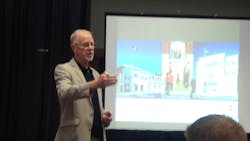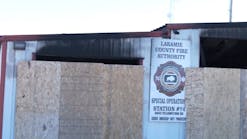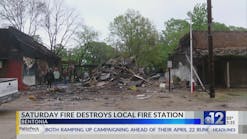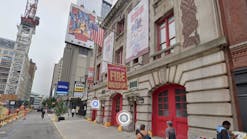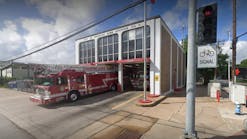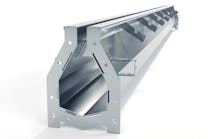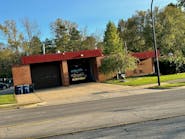BALTIMORE Md. – Most hazards to firefighters are obvious, like fire, hazmat situations, heavy smoke, and hazards at any rescue scene. Many are microscopic but can be just a deadly.
Keeping those less obvious hazards out of fire stations was the topic of a class titled “HOT Zone Design: Case Study of Willingboro Fire/EMS HQ,” which was part of a one-day Station Design Conference at Firehouse Expo on Wednesday.
The class was taught by Paul Erickson, senior principal architect/president of LeMay Erickson Willcox Architects of Reston, Va.
Erickson said the most valuable asset of any fire department is it firefighters and it’s time to start paying attention to the issue of high rate of cancer occurrences in firefighters.
“It’s time we design stations safer for the users,” Erickson said.
Erickson shared some startling statistics firefighting statistics including the fact that firefighters are 21% more likely to get colorectal cancer than the rest of the population, 28 percent more likely to get prostate cancer and a whopping 102 percent more likely to contract testicular cancer.
“All the bad stuff is in the smoke,” Erickson said, adding that it gets on turnout gear, equipment and even on and in the apparatus. Additionally, diesel smoke from apparatus starting in the fire station contributes to the particulate brew.
That’s why it’s important to contain all that bad stuff in what he calls the “hot zone.” He explained that it’s areas like apparatus bays, places where PPE is stored and equipment is cleaned.
When a department is designing a station, it’s important to put all the “hot zone” activities in one area and take precautions to make the hazardous materials and carcinogens are not transported or broadcast into the “green areas” of the building, Erickson said. He explained the green areas are places were staff sleep, offices are located, living rooms, kitchens and bathrooms.
To achieve that separation, Erickson said fire departments need to consider creating “yellow zones” which act as transition areas between the red and green zones. In the yellow zones, firefighters and responders would make sure their PPE is off and stored properly and they wash their hands with soap and water to reduce the transporting of the “bad stuff.”
The yellow zone would also have special floor mats and recessed surfaces to help reduce tracking into the green zones.
Diesel particulates should also be managed and extracted or exhausted from the buildings in some manner and PPE should be kept clean and, ideally, stored in a controlled room to prevent any off gassing from polluting the station, especially the living quarters, he said.
Firefighters should also get in the habit of wiping down and cleaning the interiors of apparatus to prevent the spread from PPE to station gear and other apparel, Erickson said, adding that PPE should never be brought home.
A key concept Erickson stressed was the idea that each of the zones should be self-sufficient. In other words, all items associated with the cleaning of equipment should be kept in one spot rather than having firefighters having to travel through green zones to retrieve cleaning supplies, or even to go to the bathroom. He even recommended two janitorial closets or storage space to avoid the transmission of hazardous particulates from the hot zones to green zones.
“The point is we don’t want anything crossing the zones,” Erickson said. “When you are transitioning through the zones, be thinking decon.”
While it might seem obvious, Erickson said mechanical and ventilation systems should also be kept separate between the green and the red sides.
Recognizing it's not completely possible or even practical to keep contaminants out of the station completely, Erickson said it’s critical to get clean before going into the green side of the house and station designers need to make accommodations for that to happen as conveniently and efficiently as possible.
“We need to keep that in the forefront of our minds,” Erickson said adding that society owes people called to be firefighters clean and healthy environments. “We think it’s an important topic. It respects the firefighters and acknowledges the price they pay to serve their calling.”
More from Firehouse Expo 2015:
